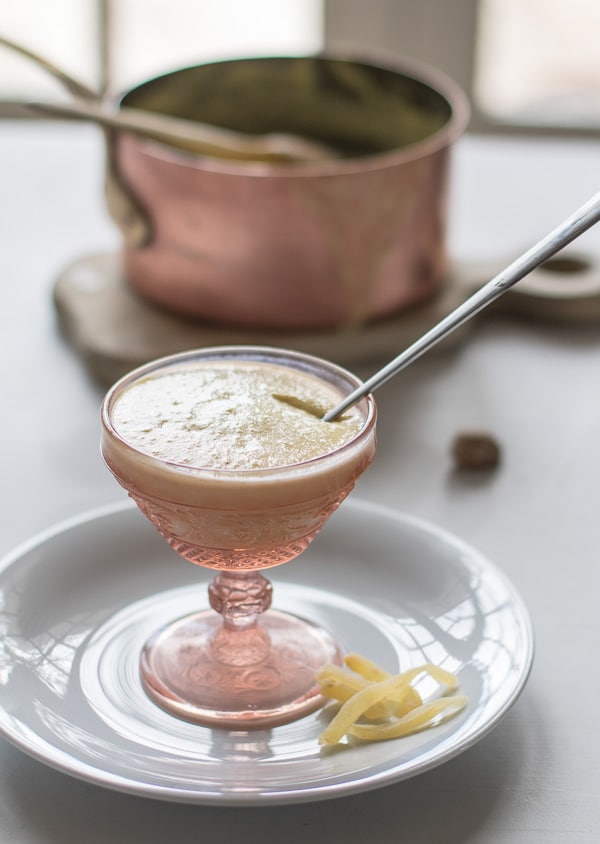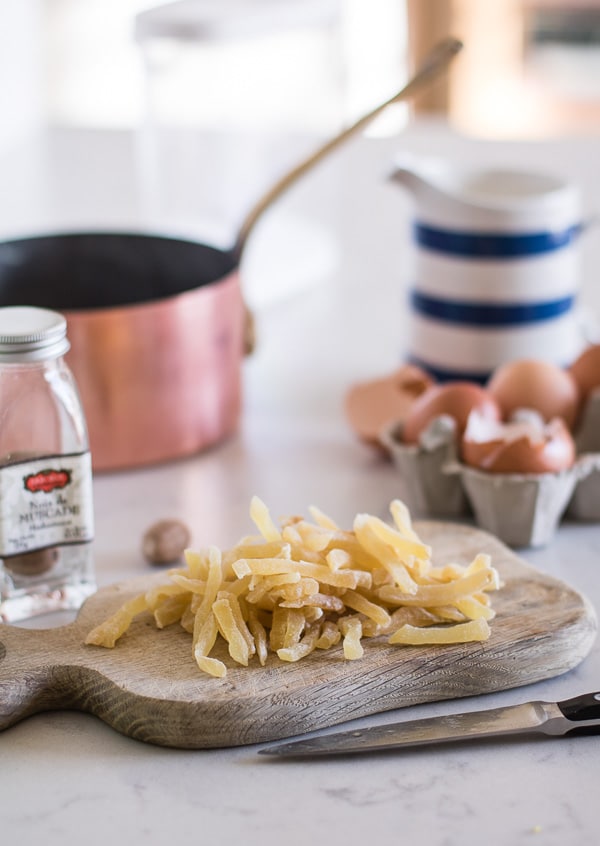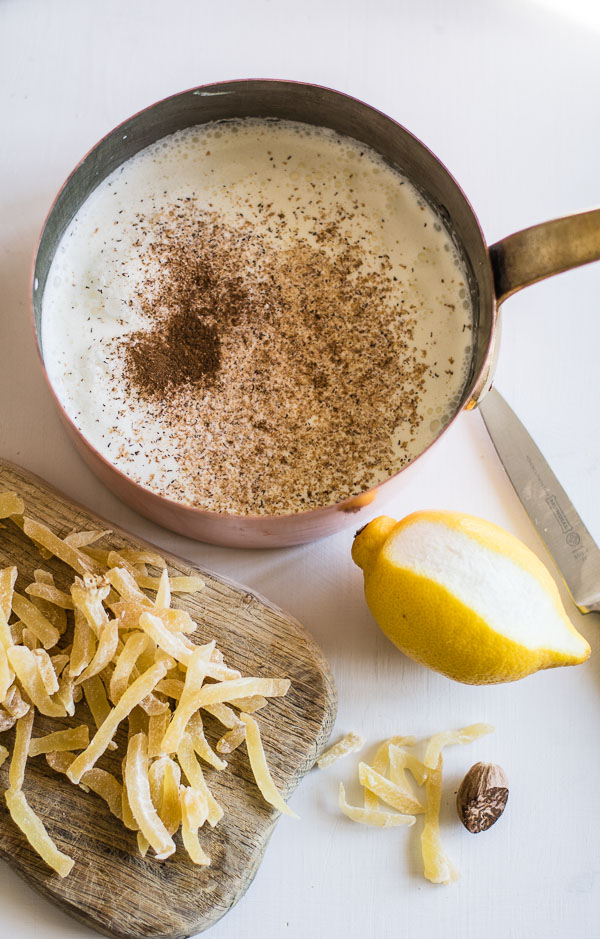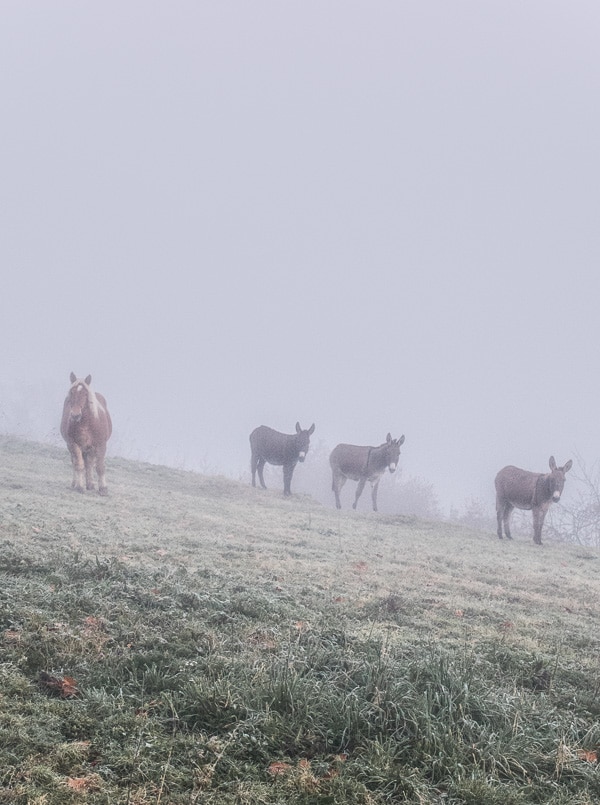
This recipe for Ginger cream was written for Vogue in December 1958. More importantly, it was written by the doyenne of food writing, Elizabeth David. It’s the kind of dessert that has all the elements required for a Christmas celebration: it’s luxuriously decedent, it’s an exotic antidote for short days and bare branches and it has the subtle slow burn of ginger that awakens the taste buds and helps a rather fatigued digestive system cope with those unavoidable festive indulgences.
I was very young when I tried ginger for the first time. My grandfather kept pieces of candied stem ginger in a cork stoppered jar beside his chair and one day, one of those seductively sugared morsels found its way into my mouth, for no better reason than because I asked if I could try a piece and my grandmother said it was ‘far too grown-up for children’. There’a something magical about the exotic, that moment when tiny taste buds are exposed to the fierce and the firey; that transfer of first taste to facial expression, reflected back at you by an expectant onlooker watching it all unfold blow by blow.
For me, that first taste was more like my first encounter with a ginger cat; soft, sweet, purringly reassuring even, but with sharp claws. Perhaps it could be said, a little bit like Elizabeth David herself; the kind of gastronomic grown up that is so exotically alluring and all knowingly fabulous, but just a little bit scary at the same time. It wasn’t exactly love at first bite, but just like my well-worn collection of Elizabeth David’s paperbacks, ginger has become a mainstay I wouldn’t be without.

Ginger originated in China before spreading to India, South-east Asia, West Africa and the Caribbean. It then traveled to Europe along the Middle Eastern trade routes and was introduced to England before the Norman Conquest in 1066. It eventually became so popular at the English dinner table that, by the 14th century, it sat beside the salt and pepper on most tables; in it’s dried form it was used as a meat seasoning. Queen Elizabeth is credited with inventing the first gingerbread man as a token gift for visiting dignitaries
This unassuming drab, paper-bag-beige rhizome seems to have adapted like a chameleon to every cuisine and course; from soups to meat, pickles, juices, cocktails, desserts, and patisseries, it seems to find a perfect niche where ever it lands. Ginger also has the ability to aid digestion and relieve nausea, not to mention it’s more racy reputation as an aphrodisiac. South Pacific islanders have used it in love potions and spells for its so-called magical qualities to arouse desire. It’s also mentioned as an aphrodisiac in the Kama Sutra, and in France, Madame du Barry, mistress to King Louis XV is said to have served ginger to him, and a host of other lovers, in the pursuit of passion.

I made Ginger Cream last Sunday in the lazy late morning light; slow stirring with a wooden spoon by the AGA listening to the gentle melody of Etude by Joep Beving fall off the keyboard like autumn leaves from the plane trees outside my window. Custards take time; a low flame and careful attention—perfect contemplative cooking for winter hibernation.

Here’s what we’re listening to at the moment—the perfect playlist to while away the hours of a misty winter’s morning…while stirring your custard. Enjoy! Misty Morning Playlist
Ginger-Infused Custard
Ingredients:
-
1 pint (570ml) whole milk
-
1 knob of preserved ginger, finely chopped plus extra for garnish
-
1 tablespoon ginger syrup (from the preserved ginger jar)
-
4 large egg yolks
-
1 tablespoon caster sugar
-
grated nutmeg to garnish
- A strip of lemon rind for infusing the milk
-
1 heaped tablespoon cornflour (cornstarch)
Instructions:
-
Infuse the Milk:
-
In a medium saucepan, gently heat the whole milk over low heat.
-
Add the finely chopped preserved ginger and a strip of lemon rind to the milk and let it infuse over low heat for about 10 minutes.
-
Stir in the ginger syrup and remove the saucepan from heat.
-
-
Prepare the Egg Mixture:
-
In a bowl, whisk together the egg yolks, caster sugar, and cornflour until smooth and well combined.
-
-
Combine and Cook:
-
Gradually pour the warm lemon & ginger-infused milk into the egg mixture, whisking continuously to prevent lumps.
-
Return the combined mixture to the saucepan and cook over low heat, stirring constantly, until the custard thickens to your desired consistency. Do not let it boil.
-
-
Serve:
-
Pour the custard into serving dishes and allow it to cool slightly.
-
Serve warm, or refrigerate and serve chilled, according to preference. Dust with grated nutmeg
-
Tips:
-
Adjusting Sweetness: The amount of ginger syrup can be adjusted based on your taste preference for sweetness and ginger intensity.
-
Storage: Store any leftover custard in the refrigerator for up to 2 days.


+ ADD A COMMENT